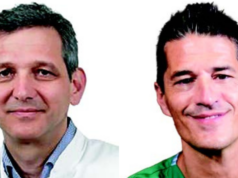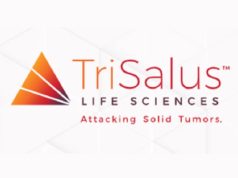
Surefire, the developer of site-specific delivery devices for the interventional oncology market, has announced the first closing of a US$12.8 M Series D financing round.
Surefire Medical will use the round, led by Ori Healthcare Fund and with continued support from previous funders, to:
- Expand sales and marketing in the USA and Europe
- Initiate sales and clinical trials in the multibillion dollar China market
- Complete the 170-patient randomised controlled QED clinical trial (NCT02748161)
- Pursue promising opportunities in the US$66 billion immunotherapy market, focusing on site-specific delivery to solid tumours
Surefire’s unique infusion system uses an expandable tip that increases infusion pressure within the tumour. The increased pressure overcomes barriers to drug delivery, delivering significantly more therapy into the tumour than older, less efficient end-hole catheters. Simultaneously, the expanding microcatheter tip protects healthy tissue by blocking backflow during infusion.
“ORI Healthcare Fund focuses on disruptive technology platforms that will lead to new standards of care, “ says Simone Song, senior partner, ORI Healthcare Fund. “We are fortunate to be able to invest in Surefire’s technology, which will change the standards of care in liver embolization and immunoncology approaches requiring direct-to-tumour delivery. We will leverage our resources in China to help penetrate the Chinese market, which has the highest and fast-growing liver cancer incidence.”
Growing body of significant clinical data
In a randomised trial, the Surefire catheter was shown to improve tumour uptake by 68% while simultaneously decreasing non-target delivery by 58%. Additionally, a multicentre registry found use of the Surefire Precision Infusion System in the treatment of primary liver cancer (hepatocellular carcinoma) was associated with a 68% complete tumour response and 92% objective tumour response. These response rates are considerably higher than the average response rates seen in the literature for this patient population.
New clinical data to be presented at the 2017 Society of Interventional Radiology’s annual scientific meeting this month reinforces previous findings. In a retrospective case-controlled comparison, the use of Surefire infusion technology achieved a 79% objective response rate in the treatment of primary liver cancer (hepatocellular carcinoma) in transarterial chemoembolization procedures (TACE) vs. 37% with a standard microcatheter.
“We plan to have the Surefire Infusion System become the standard of care in liver embolization,” says Surefire Medical president and CEO James Chomas. “We are very pleased to welcome the ORI Fund. This series D financing supports our core liver cancer business by expanding to large untapped markets as well as expanding our business model through partnerships with biotechnology companies developing immunotherapies for solid tumours.”













